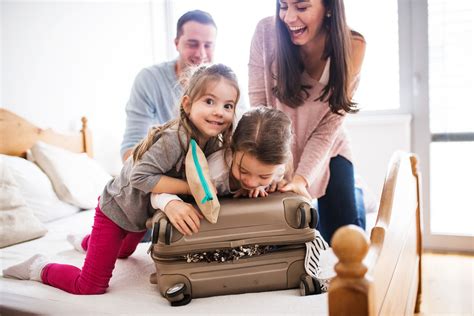Moving can be a daunting task, but with the right approach, it can become a smooth and organized process. The key to a stress-free move lies in effective packing. Our ultimate packing guide is designed to help you streamline the moving process, ensuring that you are well-prepared every step of the way. From decluttering your home and creating a strategic timeline to gathering quality supplies and packing efficiently, we’ve got you covered. Whether you’re moving across town or across the country, these essential tips will help you stay organized, protect your belongings, and make your transition as seamless as possible.
Join elolok.net for an in-depth exploration of this topic.
1. Declutter Before Packing
Before you start packing, take the time to declutter your home. This step is crucial for a smoother and more efficient move. Begin by going through each room and evaluating what items you truly need and use. Sort your belongings into categories: keep, donate, sell, or discard. Focus on items that are broken, outdated, or rarely used. This process not only reduces the number of items you need to pack but also makes unpacking easier and faster. By eliminating unnecessary clutter, you can save time and effort on packing and unpacking, and potentially even reduce moving costs. Additionally, decluttering provides an opportunity to refresh your living space and start anew in your new home. Embrace this chance to simplify your life and ensure that only the items you truly value and need make the journey with you.

2. Create a Packing Timeline
Creating a packing timeline is essential for a well-organized move. Start by setting a moving date and work backward to establish a realistic schedule. Begin planning at least 4 to 6 weeks in advance to ensure you have ample time for each task. Break down the packing process into manageable stages. Start with less frequently used items and gradually move to daily essentials as the moving day approaches.
Create a checklist with specific milestones, such as completing the packing of seasonal items, books, and kitchenware. Allocate time for tasks like sorting and decluttering, as well as arranging for the purchase or gathering of packing supplies. Include buffer days for unexpected delays and to accommodate any last-minute tasks.
Communicate your timeline to all family members to ensure everyone is on the same page and can contribute effectively. Regularly review and adjust your timeline as needed to stay on track. By adhering to a well-structured packing timeline, you can reduce stress, avoid last-minute scrambling, and ensu

3. Gather Quality Packing Supplies
Gathering quality packing supplies is crucial for protecting your belongings during the move. Start by collecting sturdy boxes in various sizes to accommodate different types of items. Use high-quality packing tape to securely seal your boxes and prevent them from opening during transit. Invest in bubble wrap or packing paper to cushion fragile items and prevent breakage. For added protection, consider using foam peanuts or air-filled bags.
Don’t forget to get markers and labels to clearly identify the contents of each box. This will make unpacking much easier and help you find essential items quickly. Additionally, gather other helpful supplies such as moving blankets to protect large furniture, zip-lock bags for small parts and screws, and a toolkit for disassembling furniture.
Having the right packing supplies on hand will not only protect your belongings but also streamline the packing process, ensuring that everything arrives at your new home in excellent condition.

4. Label Boxes Clearly
Labeling boxes clearly is a vital step to ensure an organized move. Start by using a permanent marker to write on the top and sides of each box, making it visible from different angles. Include key details such as the room where the box should go, a brief description of its contents, and any special handling instructions, such as “fragile” or “heavy.” For added convenience, consider using color-coded labels or stickers for different rooms, which can help you quickly identify where each box belongs.
Be specific with your descriptions to avoid confusion. Instead of labeling a box as just “kitchen,” specify “kitchen – pots and pans” or “kitchen – dishes and utensils.” This level of detail will help you locate items easily during unpacking and reduce the likelihood of opening multiple boxes to find what you need.
Keep a master inventory list of all labeled boxes and their contents. This list can be invaluable if you need to track down specific items quickly or if any boxes go missing. Clear labeling will save you time and effort, making the moving process smoother and more efficient.
5. Pack Room by Room
Packing room by room is an effective strategy to keep your move organized and manageable. Begin with one room at a time, starting with those that are least frequently used. This method prevents mixing items from different rooms and helps maintain order throughout the packing process.
Start by sorting and packing non-essential items first, such as seasonal decorations, books, or out-of-season clothing. As you pack, label each box with the room name and a brief description of its contents. This will simplify unpacking and ensure that boxes end up in the correct rooms.
Keep essential items for each room together to make unpacking more efficient. For instance, pack a separate box with essential items like toiletries, a change of clothes, and basic kitchen supplies for the first few days in your new home. By packing room by room, you create a clear and organized system that reduces the chances of losing items and makes the transition smoother.
6. Protect Fragile Items
Protecting fragile items is crucial to ensure they arrive at your new home intact. Begin by wrapping delicate items, such as glassware, ceramics, and electronics, in bubble wrap or packing paper. For added protection, use foam peanuts or air-filled bags to fill any empty spaces in the boxes, preventing items from shifting during transit.
Clearly mark boxes containing fragile items with “fragile” or “handle with care” labels. Place these boxes on top of heavier items to avoid crushing. Avoid overloading boxes to prevent damage from excess weight. For particularly delicate items, consider using specialized packing materials like padded envelopes or custom-fit boxes.
When packing electronics, remove batteries and pack them separately. For large items, such as mirrors or framed artwork, use moving blankets or cardboard to shield them from impacts. Properly protecting your fragile belongings not only minimizes the risk of damage but also ensures that everything arrives safely an
7. Use Space Efficiently
Using space efficiently when packing helps maximize your moving containers and reduces the number of boxes needed. Start by packing items tightly to minimize empty space. For instance, fill gaps inside boxes with smaller items like shoes, linens, or kitchen utensils. This approach helps prevent shifting and potential damage during transit.
When packing clothing, consider using vacuum-sealed bags to compress items and save space. For items like books, stack them flat rather than standing them upright to prevent warping and utilize box space better. Use the space inside pots, pans, and other containers to store smaller items, effectively doubling their usefulness.
Distribute weight evenly across boxes to prevent them from becoming too heavy and difficult to handle. For large furniture pieces, disassemble them if possible and pack smaller parts inside larger pieces to optimize space. By packing smartly and efficiently, you reduce the number of boxes, save on moving costs, and make the entire moving process more organized.
8. Pack an Essentials Box
Packing an essentials box is crucial for a smooth transition into your new home. This box should contain items you’ll need immediately upon arrival, ensuring you have access to necessities without having to search through packed boxes. Start by including items like toiletries, a few changes of clothes, and basic kitchen supplies such as utensils, a few dishes, and a coffee maker.
Add important documents, such as identification, contracts, and moving-related paperwork, to avoid misplacing them. Don’t forget items for daily comfort, like medications, phone chargers, and pet supplies if you have pets. Consider packing a basic toolkit for assembling furniture and performing minor repairs.
Label this box clearly with “Essentials” and ensure it is placed in an easily accessible spot during the move. Keeping your essentials box handy will make settling into your new home more comfortable and stress-free, as you won’t have to dig through multiple boxes to find what you need.
9. Secure Valuables Separately
Securing valuables separately is crucial to ensure their safety during the move. Begin by identifying all valuable items, such as jewelry, important documents, cash, and sentimental objects. These items should not be packed with general household goods to prevent loss or theft.
Use a dedicated, secure container, like a lockable box or a small safe, to store these valuables. For items like jewelry, consider using padded pouches or cases to prevent scratches and damage. Important documents, including passports, legal papers, and insurance documents, should be kept in a waterproof and fireproof container for added protection.
Keep these containers with you rather than placing them in the moving truck. Carry them in your personal vehicle or another secure location where you can easily access them. If you are using a moving company, inform them about these high-value items and ensure they are aware that they should be handled with extra care.
Additionally, consider taking photos or creating an inventory list of your valuables for reference and insurance purposes. By securing your valuables separately and keeping them with you, you can ensure their safety and have peace of mind throughout the moving process.
10. Hire Professional Packers (Optional)
Hiring professional packers can be a valuable option if you want to streamline your move and ensure everything is packed with expertise. Professional packers bring experience and efficiency to the process, handling the packing of all your belongings with care and precision. They are skilled in using the right packing materials and techniques to protect fragile items and optimize space.
While this option adds to the overall cost of your move, it can save you significant time and effort. Professional packers can also assist with disassembling and reassembling furniture, as well as managing logistics for complex or high-value items.
Before hiring, research moving companies thoroughly, read reviews, and compare quotes. Ensure the company is licensed and insured to protect against potential damage. If you opt for professional packers, you’ll benefit from a smoother, more organized move and can focus on other aspects of your relocation.
By following these packing tips, you can make your move more organized and less stressful. From decluttering and creating a timeline to packing efficiently and securing valuables, each step plays a crucial role in ensuring a smooth transition. Whether you choose to pack yourself or hire professionals, proper preparation and attention to detail will help you arrive at your new home ready to settle in with ease.
elolok.net